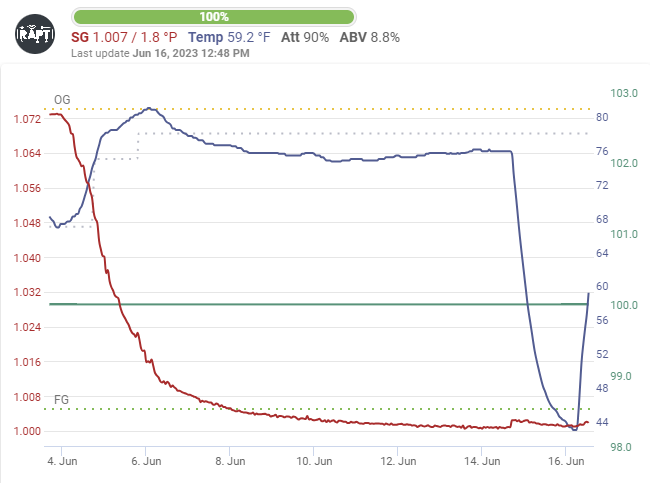Anyone out there deliberately using yeast "off label"?
I brewed a heavy ale that was around 37% wheat, and I chose Lallemand Abbaye back when I wrote the recipe, probably because it sounded Belgian. The last batch I brewed blew up in a few days. The gravity plummeted and stopped. Dropped 68 points in 4 days. Came out perfect.
Right now I'm brewing an ale, pretty much like a witbier, and I'm using Safbrew WB-06, which is supposed to be a wheat yeast. The bill is 73% wheat. I've brewed it before.
Fermentation was insane after a day, but then it slowed down. Looks like it will be a while before I can keg. It tastes and smells fantastic so far (1.017), but no better than the heavy ale. I feel like I'm using a slow yeast for no good reason.
Lallemand lists "Belgian white" as a possible use for Abbaye, so maybe I'm not really off-label. It seems like the Belgians just do whatever they want.
I brewed a heavy ale that was around 37% wheat, and I chose Lallemand Abbaye back when I wrote the recipe, probably because it sounded Belgian. The last batch I brewed blew up in a few days. The gravity plummeted and stopped. Dropped 68 points in 4 days. Came out perfect.
Right now I'm brewing an ale, pretty much like a witbier, and I'm using Safbrew WB-06, which is supposed to be a wheat yeast. The bill is 73% wheat. I've brewed it before.
Fermentation was insane after a day, but then it slowed down. Looks like it will be a while before I can keg. It tastes and smells fantastic so far (1.017), but no better than the heavy ale. I feel like I'm using a slow yeast for no good reason.
Lallemand lists "Belgian white" as a possible use for Abbaye, so maybe I'm not really off-label. It seems like the Belgians just do whatever they want.






















































![Craft A Brew - Safale BE-256 Yeast - Fermentis - Belgian Ale Dry Yeast - For Belgian & Strong Ales - Ingredients for Home Brewing - Beer Making Supplies - [3 Pack]](https://m.media-amazon.com/images/I/51bcKEwQmWL._SL500_.jpg)




